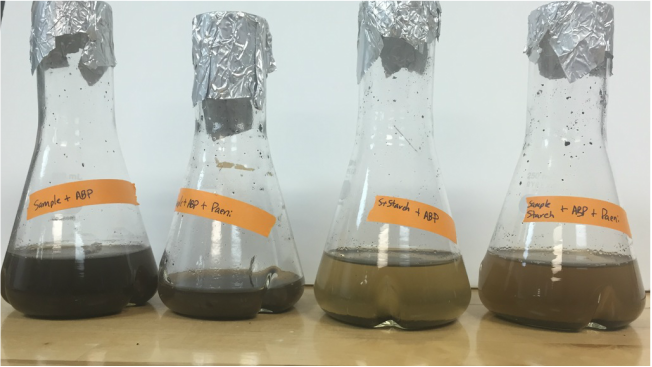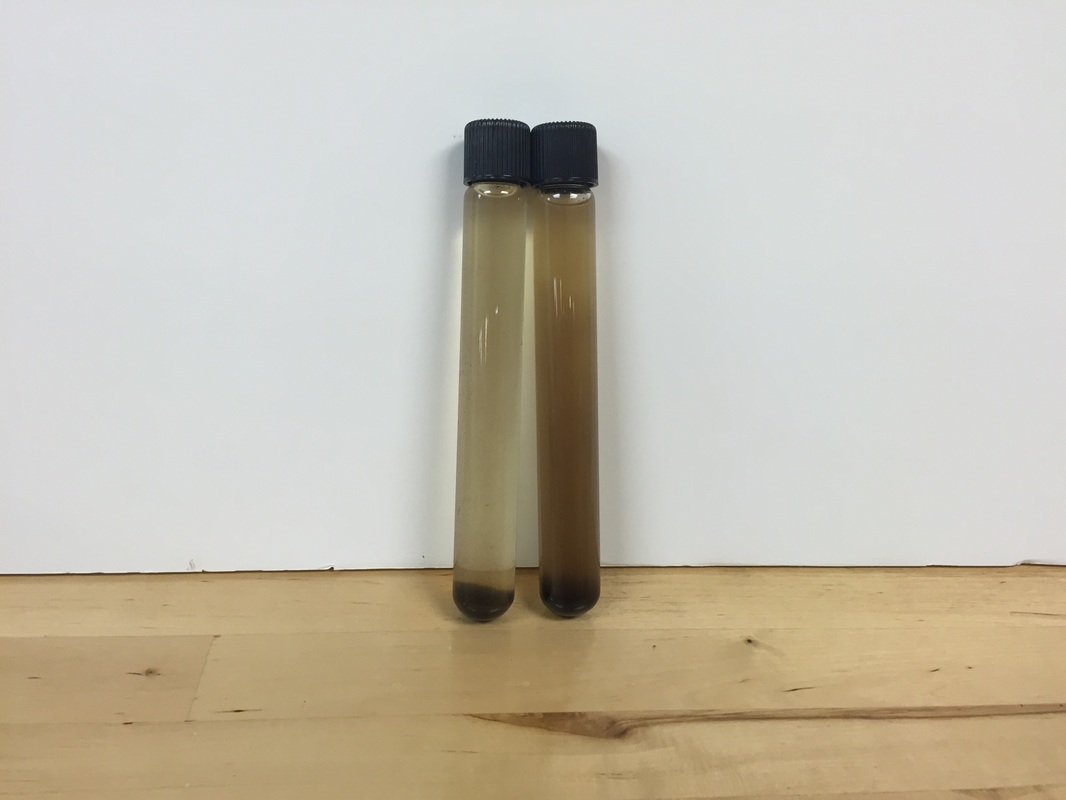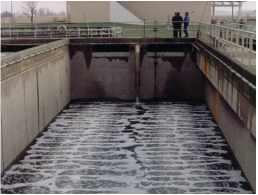The extracellular materials help the organisms by providing a protected, more stable environment, help prevent predation, improve access to nutrients and micronurtrients, and bind insoluble materials for later breakdown/utilization by the microbes.
For the past week, I have been screening a high soluble BOD wastewater stream (BOD5 of 4,200 mg/L) with high levels of starches, organic acids, and proteins. I was looking for ways to increase floc formation and improve water clarity, lower TSS before discharge. After searching various microbes for blending, I looked for strains with the capability of producing a cationic, high molecular weight polymer that remains attached to cell. The optimal strains would also produce this polymer during log growth which is a not commonly seen.
Adding these cultures to existing biomass created big changes in a 40 hour study. The results were easily seen in photos.




 RSS Feed
RSS Feed